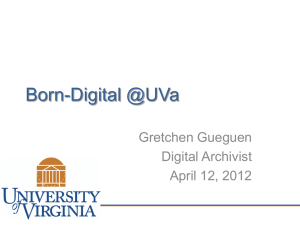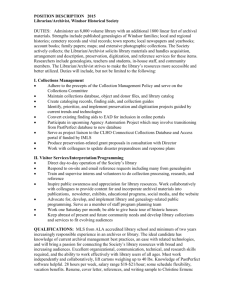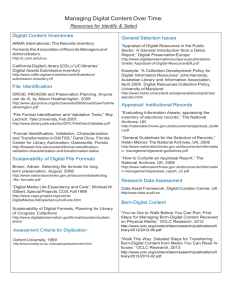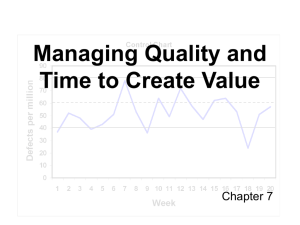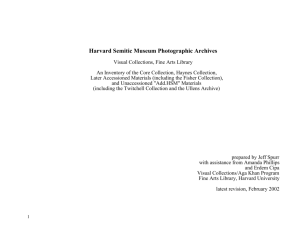Report
advertisement
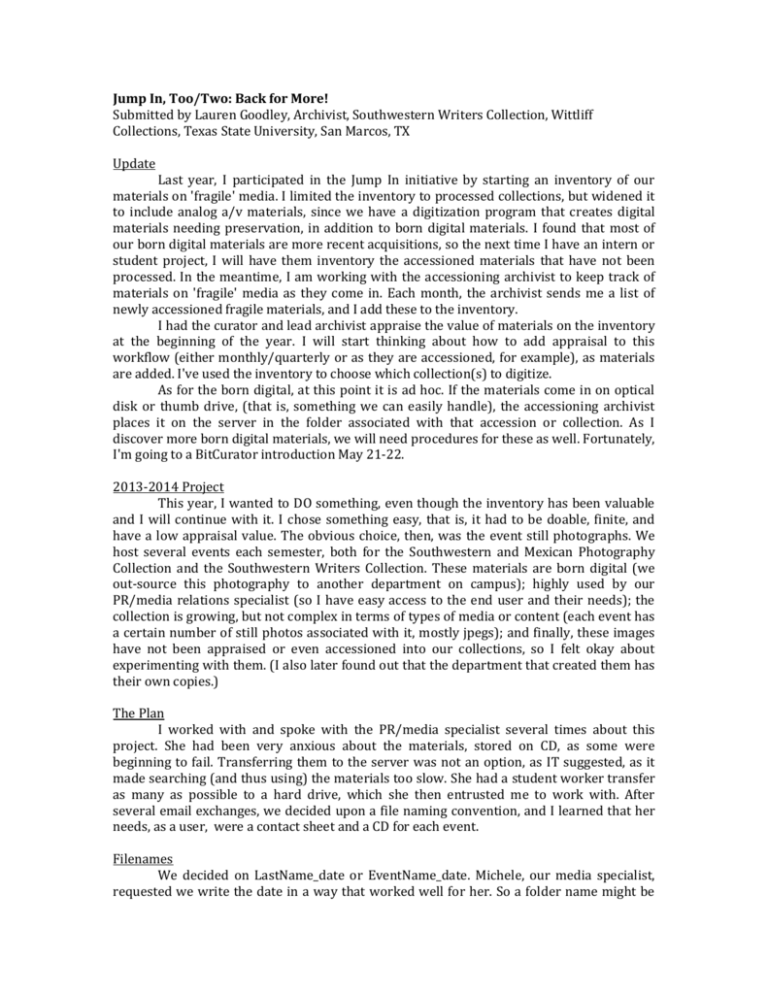
Jump In, Too/Two: Back for More! Submitted by Lauren Goodley, Archivist, Southwestern Writers Collection, Wittliff Collections, Texas State University, San Marcos, TX Update Last year, I participated in the Jump In initiative by starting an inventory of our materials on 'fragile' media. I limited the inventory to processed collections, but widened it to include analog a/v materials, since we have a digitization program that creates digital materials needing preservation, in addition to born digital materials. I found that most of our born digital materials are more recent acquisitions, so the next time I have an intern or student project, I will have them inventory the accessioned materials that have not been processed. In the meantime, I am working with the accessioning archivist to keep track of materials on 'fragile' media as they come in. Each month, the archivist sends me a list of newly accessioned fragile materials, and I add these to the inventory. I had the curator and lead archivist appraise the value of materials on the inventory at the beginning of the year. I will start thinking about how to add appraisal to this workflow (either monthly/quarterly or as they are accessioned, for example), as materials are added. I've used the inventory to choose which collection(s) to digitize. As for the born digital, at this point it is ad hoc. If the materials come in on optical disk or thumb drive, (that is, something we can easily handle), the accessioning archivist places it on the server in the folder associated with that accession or collection. As I discover more born digital materials, we will need procedures for these as well. Fortunately, I'm going to a BitCurator introduction May 21-22. 2013-2014 Project This year, I wanted to DO something, even though the inventory has been valuable and I will continue with it. I chose something easy, that is, it had to be doable, finite, and have a low appraisal value. The obvious choice, then, was the event still photographs. We host several events each semester, both for the Southwestern and Mexican Photography Collection and the Southwestern Writers Collection. These materials are born digital (we out-source this photography to another department on campus); highly used by our PR/media relations specialist (so I have easy access to the end user and their needs); the collection is growing, but not complex in terms of types of media or content (each event has a certain number of still photos associated with it, mostly jpegs); and finally, these images have not been appraised or even accessioned into our collections, so I felt okay about experimenting with them. (I also later found out that the department that created them has their own copies.) The Plan I worked with and spoke with the PR/media specialist several times about this project. She had been very anxious about the materials, stored on CD, as some were beginning to fail. Transferring them to the server was not an option, as IT suggested, as it made searching (and thus using) the materials too slow. She had a student worker transfer as many as possible to a hard drive, which she then entrusted me to work with. After several email exchanges, we decided upon a file naming convention, and I learned that her needs, as a user, were a contact sheet and a CD for each event. Filenames We decided on LastName_date or EventName_date. Michele, our media specialist, requested we write the date in a way that worked well for her. So a folder name might be "Ali_15Nov2012" and the files contained within would be "Ali_15Nov2012-001", "Ali_15Nov2012-002", etc. I used free downloaded software "NameChanger", and I was able to transfer 37 folders (each representing an event) out of a total of 98 folders/events to a new hard drive. Use Copies After changing the filenames, I used Adobe Bridge to create a contact sheet for each series/folder/event. I then burned a CD for each series/folder/event, and had a student create a binder for each series. This system has not been in place long enough for me to evaluate how it is working for our media specialist, but my hope is that minimal tweaking will be needed, since I consulted with her first, and along the way, and mimics her current workflow and habits as much as possible. I'm glad I used Adobe Bridge to create the contact sheets, because this software also has a keyword option. I plan to take an Adobe Bridge class with the media specialist this summer, so that we can see how these subject headings could help with item- and serieslevel photograph description, which at can be very time-consuming. Preservation Copies I think I have a good start at preservation copies for these materials. Minimal metadata is contained in the filename (date and series title). Further description is in the contact sheets, which are kept in the series folders. Currently, they exist on two hard drives at my desk, which is not ideal. Our IT is working toward preservation server space for items that will not be accessed often, only for preservation management purposes, so that will be another copy. Issues going forward Time: I did the most recent series, as the older ones had files that were failing. As I can scrape out time, or find student assistance, I need to go through the older CDs, find the corrupt files, and either delete them or attempt to replace (an appraisal decision I may not be comfortable making). It may depend upon how difficult it is to retrieve the files, and what the ultimate appraisal decision is for these materials. Creator: I also want to speak to the photography department, discover their file naming conventions (to see if we can make improvements to either theirs or ours), see if they have the missing/corrupt files, and see what they are doing with their copies. Perhaps they have yet another copy of the photos, which would be great, as long as I can document this as part of our preservation plan. Lessons Learned People! I am learning to speak coherently and have productive conversations with nonarchivists, including content creators and content users. Surveys: Jump In! DigPresInventory_Jan2013.fp7 This is the inventory of fragile (digital and analog a/v) materials from last year, from the processed collections. JumpIn_Inventory.xlsx This is the size calculation of digital materials from the above inventory. Surveys: Jump In Too/Two StorageSize_2014May.xlsx These are sizes of digitized materials. Includes the events pictures described in the narrative above. Image1: Fragile analog a/v materials are digitized and stored on hard drive. Image2: Born digital images: use copies are on CD with a paper contact sheet, in binders on the folder. Preservation copies are on hard drive. Image3: Lauren Goodley, Archivist, Wittliff Collections, Texas State University.


